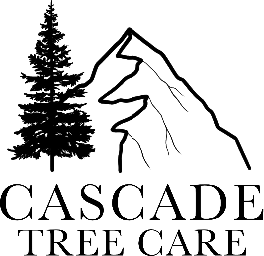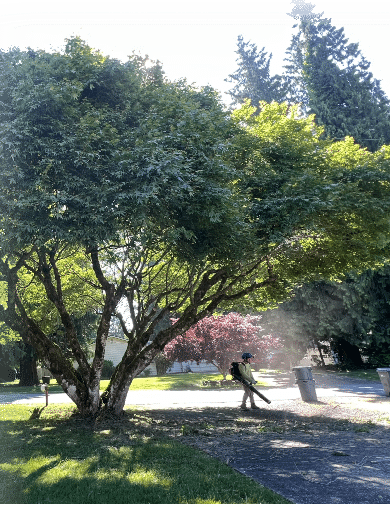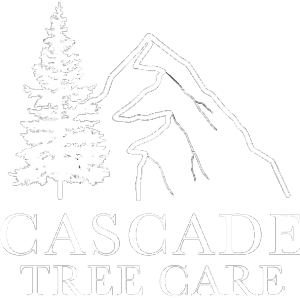Preventing Common Mistakes in Tree Removal: Tips for a Safe Process
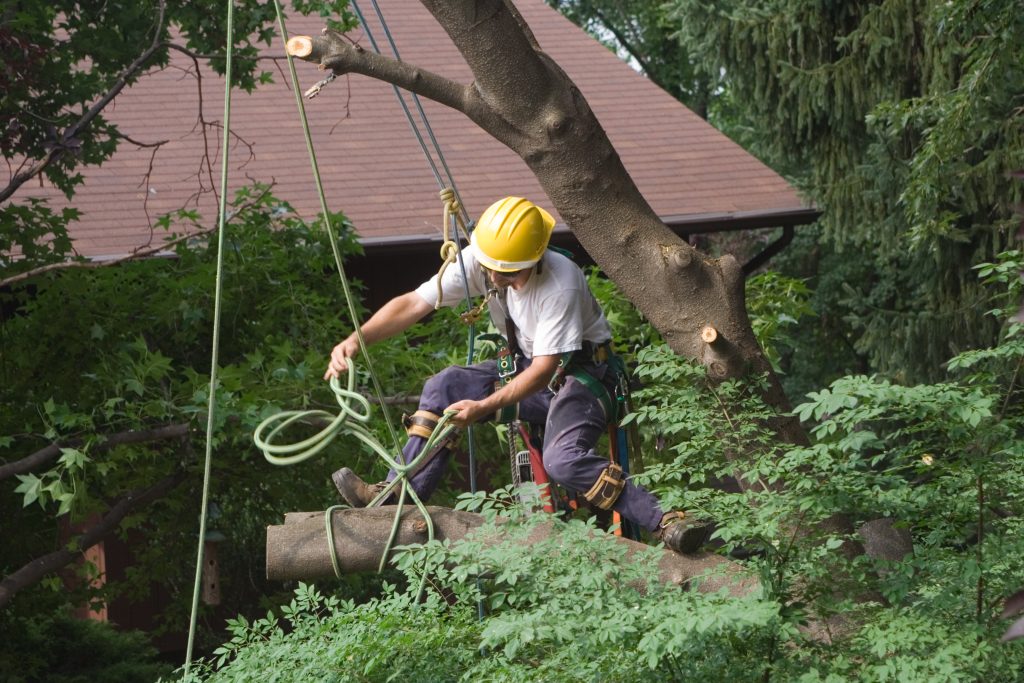
Tree cutting is a complex and potentially dangerous task that requires careful planning, proper equipment, and expertise. Unfortunately, many homeowners make common mistakes that can result in property damage, injuries, or costly errors. In this article, we’ll discuss the common mistakes to avoid to ensure a safe and successful process during tree removal in Bellevue, WA. 1. Lack of Proper Planning: One of the biggest mistakes in tree clearing is failing to plan adequately. This includes assessing the tree’s condition, surrounding area, and potential hazards, and developing a removal strategy. Without proper planning, the removal process can become chaotic and unsafe. 2. Not Using the Right Equipment: Using incorrect or inadequate equipment for tree clearing can lead to accidents and inefficiencies. Chainsaws, ropes, rigging equipment, and safety gear are essential tools that should be used correctly and maintained properly to ensure a smooth and safe removal process. 3. Improper Cutting Techniques: Improper cutting techniques, such as incorrect notch cuts or failing to use the proper felling direction, can cause the tree to fall unpredictably or get stuck. It’s crucial to follow industry-standard cutting techniques and guidelines to cut the tree in the intended direction safely. 4. Ignoring Safety Measures: Safety should always be the top priority during tree cutting. Ignoring safety measures, such as wearing personal protective equipment (PPE), securing the work area, and having a trained crew, can lead to accidents, injuries, or fatalities. 5. Neglecting Environmental Considerations: Failing to consider environmental factors, such as nearby structures, power lines, or protected vegetation, can result in damage or legal issues. It’s important for the tree-cutting company in Bellevue, WA, to comply with local regulations, obtain necessary permits, and take environmental considerations into account during tree-cutting. Avoiding these common mistakes is crucial for a safe, efficient, and successful tree-felling process. When in doubt, it’s always best to hire professionaltree removal contractors in Bellevue, WA, with the expertise, experience, and resources to handle tree-clearing tasks safely and effectively. For more information, hire the experts at Cascade Tree Services. Our team provides professional tree care services. Call us at 425-530-9697 now!
Benefits of Regular Tree-Cutting Services for Property Maintenance
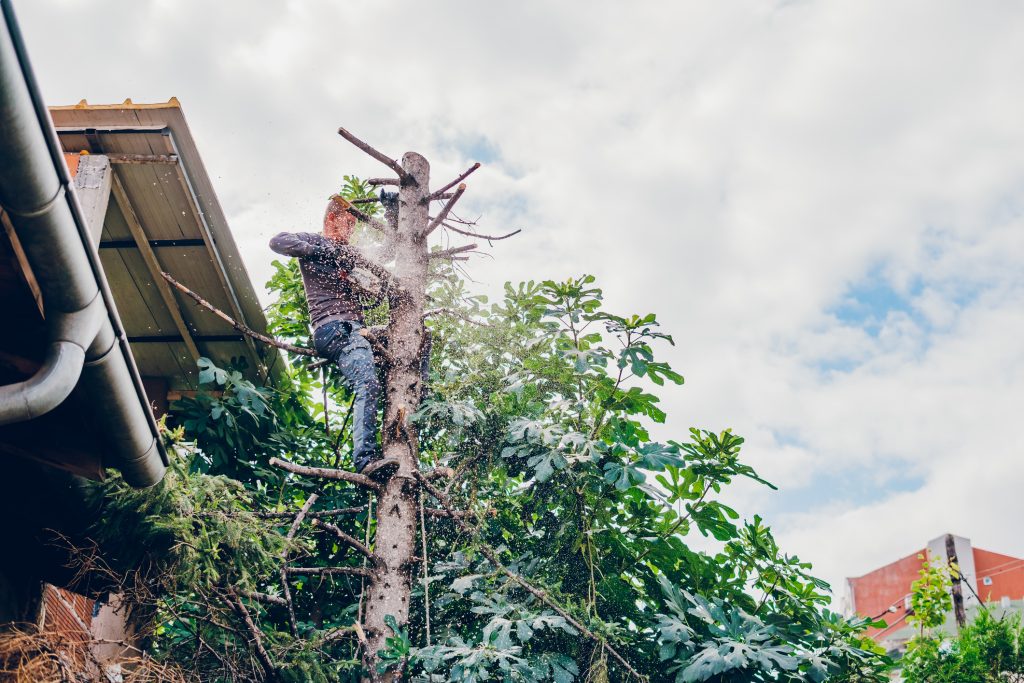
Regular tree trimming services are essential for maintaining the beauty, safety, and health of your property’s landscape. Professional tree care prevents potential hazards and promotes tree health. In this article, we’ll explore the numerous benefits of investing in regular tree-cutting services in Bellevue, WA, for effective property maintenance. 1. Enhances Aesthetics and Curb Appeal: Regular tree health management services help enhance the aesthetics and curb appeal of your property. Trimming overgrown branches, shaping trees, and removing dead or damaged limbs improve the overall appearance of your landscape, creating a more visually appealing environment for residents and visitors alike. 2. Promotes Tree Health and Growth: Trimming trees regularly promotes their health and growth. Removing diseased, infested, or weak branches allows trees to allocate more energy to healthy growth, resulting in stronger, more resilient trees. Proper pruning techniques also stimulate new growth and improve the structure of trees over time. 3. Prevents Potential Hazards: Overgrown or poorly maintained trees can pose hazards such as falling branches or limbs, especially during storms or high winds. Regular tree health care services help identify and address potential hazards, reducing the risk of property damage, injuries, and liabilities associated with tree-related accidents. 4. Increases Sunlight and Air Circulation: Trimming trees allows more sunlight to reach your landscape and improves air circulation. This is particularly beneficial for grass, plants, and other vegetation, promoting their growth and vitality. Increased sunlight and airflow also contribute to a healthier ecosystem within your property. Investing in regular tree health care services is crucial for effective property maintenance and landscape management. From enhancing aesthetics and promoting tree health to preventing hazards and minimizing pest infestations, professional tree care offers a multitude of benefits saving a major tree removal cost in Bellevue, WA. By partnering with experienced arborists and tree care professionals, homeowners and property managers can ensure a beautiful, safe, and thriving landscape for years to come. Are you searching for an ideal service company for tree trimming service in Bellevue, WA? Your search ends with our experts at Cascade Tree Services to transform your property. Contact us at 425-530-9697 for professional tree-cutting and maintenance solutions!
Unveiling Expert Insights: Essential Tips for Successful Tree Removal
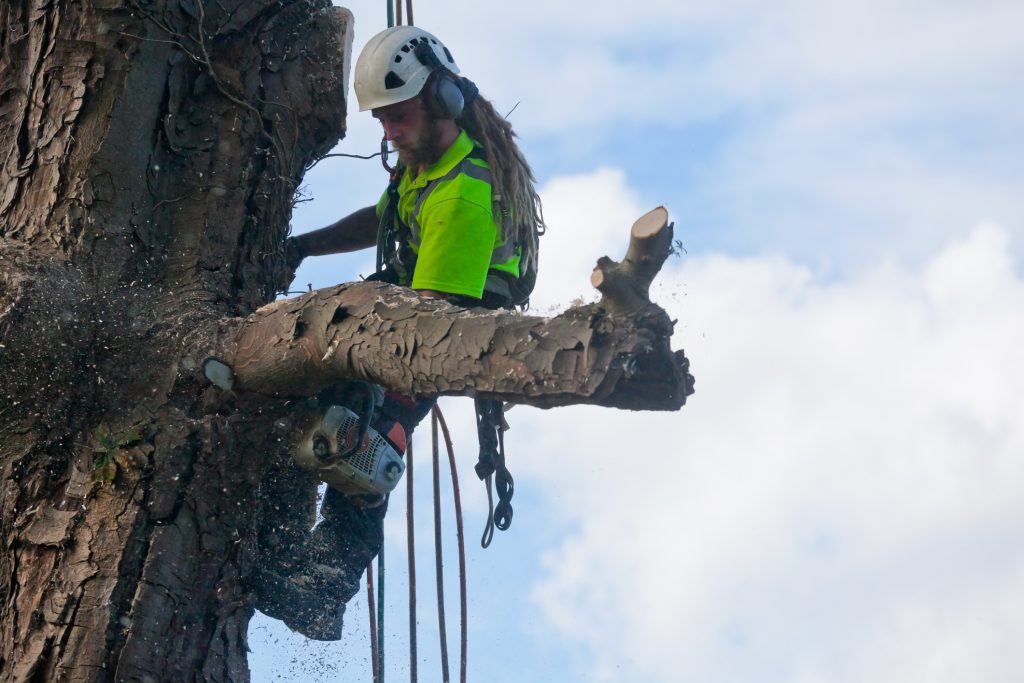
Tree cutting is a task that requires careful consideration, strategic planning, and professional expertise. Whether you are dealing with a diseased tree, one posing a safety hazard, or simply need space for a new project, understanding the ins and outs of tree cutting is crucial. In this comprehensive guide, we unveil insider tips to empower you in making informed decisions throughout the tree removal process, ensuring a successful and stress-free experience. 1. Assessing Tree Health: Before diving into the removal process, assess the health of the tree. Look for signs of disease, pest infestations, or structural instability. A professional arborist can provide a thorough evaluation, guiding you on whether removal is necessary. 2. Understanding Local Regulations: Check local regulations and permits related to tree cutting in your area. Some municipalities have specific rules governing the removal of trees, especially those considered significant or protected. Understanding these regulations avoids legal complications. 3. Hiring Certified Arborists: Engage certified arborists for tree clearing. Their expertise ensures a systematic and safe removal process. Certification signifies a commitment to industry standards and ongoing education, providing peace of mind for a job well done. 4. Obtaining Multiple Quotes: Seek quotes from multiple tree elimination professionals. This allows you to compare pricing, services offered, and the overall approach to the project. Choose a company that aligns with your budget and demonstrates a comprehensive understanding of your specific needs. 5. Equipment and Techniques: Inquire about the equipment and techniques the tree-cutting professionals use. Modern and well-maintained equipment, along with updated industry techniques, contribute to a more efficient and safer removal process. 6. Safety Measures: Prioritize safety throughout the removal process. Ensure the tree felling team adheres to industry safety standards, uses appropriate personal protective equipment, and employs strategic cutting and rigging techniques to minimize risks. 7. Waste Disposal Plans: Discuss waste disposal plans with the tree pruning professionals. Will they handle the debris removal, or is it your responsibility? Understanding the cleanup process ensures a smooth transition post-removal. 8. Environmental Considerations: If possible, opt for environmentally friendly tree-cutting practices. Some companies specialize in eco-conscious methods, such as recycling wood and minimizing the environmental impact of the removal. 9. Communication with Neighbors: Keep neighbors informed about your tree-clearing plans, especially if it might affect their property. Open communication fosters good relations and avoids potential conflicts. 10. Stump Removal Considerations: Decide whether you want to include stump removal in the process. Discuss the options, costs, and potential landscaping considerations with the tree harvesting professionals. Tree pruning is a significant decision that demands careful planning and execution. By assessing tree health, understanding local regulations, hiring certified arborists, obtaining multiple quotes, considering equipment and techniques, prioritizing safety, discussing waste disposal, acknowledging environmental considerations, communicating with neighbors, and deciding on stump removal, you empower yourself for a successful removal experience. Whether it’s about reclaiming space, addressing safety concerns, or enhancing the aesthetics of your property, these insider tips ensure that the process is efficient, transparent, and aligned with your specific needs. Elevate your tree removal experience with our expert tips from Cascade Tree Services. From health assessment to eco-friendly practices, we guide you through a seamless process. Contact us at 425-530-9697 to transform your landscape today!
Safety First: Tree Cutting Company Practices for Risk Mitigation
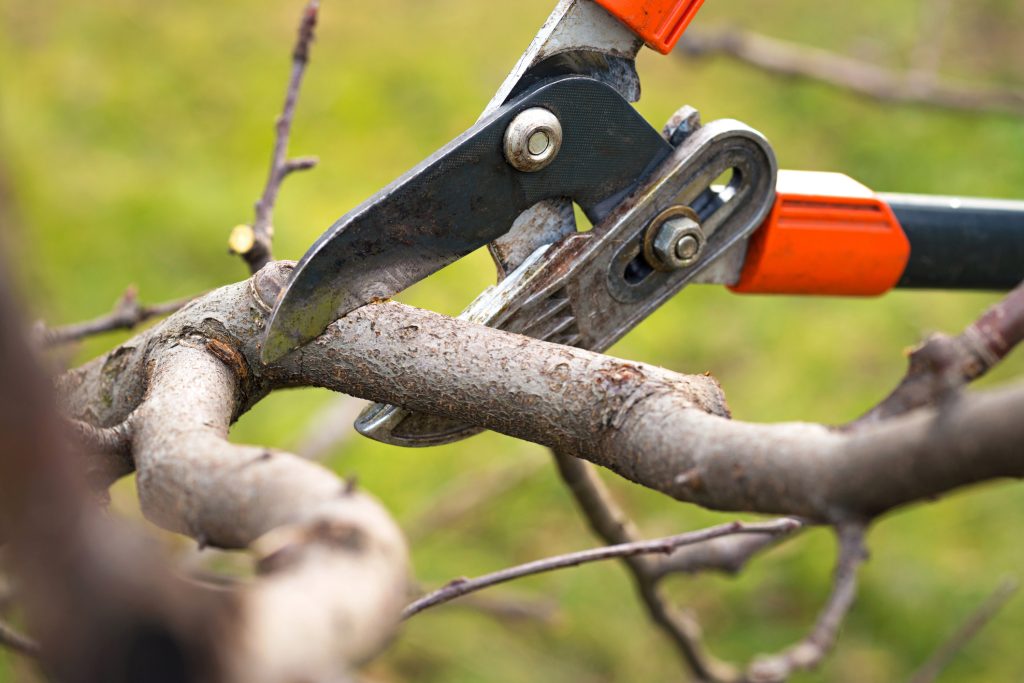
In the realm of tree cutting, safety stands as the linchpin of paramount importance. Navigating the intricate task of tree clearance demands meticulous attention to safety measures from a professional tree-cutting company in Bellevue, WA. In this article, we delve into the essential safety protocols and industry practices meticulously implemented by these companies, underscoring their commitment to a secure, hazard-free, and responsible approach to tree cutting.. 1. Site Assessment and Hazard Identification: Before any tree-cutting begins, reputable companies conduct a thorough site assessment to identify potential hazards. This includes evaluating the tree’s health, stability, and proximity to structures, ensuring a comprehensive understanding of the potential risks involved. 2. Rigorous Training and Certification: Employees of tree-cutting companies undergo rigorous training programs to enhance their skills and knowledge. Certification in arboriculture and tree cutting ensures that workers are well-prepared to handle various scenarios during tree removal in Bellevue, WA, reducing the likelihood of accidents. 3. Strategic Tree Felling Techniques: Experienced tree-cutting companies employ strategic felling techniques to control the direction of tree fall. This prevents damage to surrounding structures and minimizes the risk of accidents during the cutting process. 4. Proper Equipment Maintenance: Regular maintenance of cutting equipment is paramount for safe operations. Companies ensure that chainsaws, ropes, and other tools are well-maintained to prevent malfunctions that could lead to accidents. In conclusion, safety is the cornerstone of professional tree-cutting practices. From thorough site assessments and hazard identification to the use of personal protective equipment, rigorous training, strategic felling techniques, proper equipment maintenance, and effective communication, tree-cutting companies prioritize safety at every stage. Homeowners seeking tree-cutting services should prioritize companies that adhere to these safety measures, ensuring a secure and risk-mitigated tree-clearance experience. By choosing a reputable and safety-conscious tree-cutting firm, property owners can have peace of mind. Finding an optimum service company for tree trimming near Bellevue, WA, is simple with our professionals at Cascade Tree Services. Explore our tree-cutting services, where rigorous safety measures and industry practices ensure a secure and hazard-free experience. Contact us today at 425-530-9697!
Comparing Quotes: Finding Budget-Friendly Tree Removal Contractors
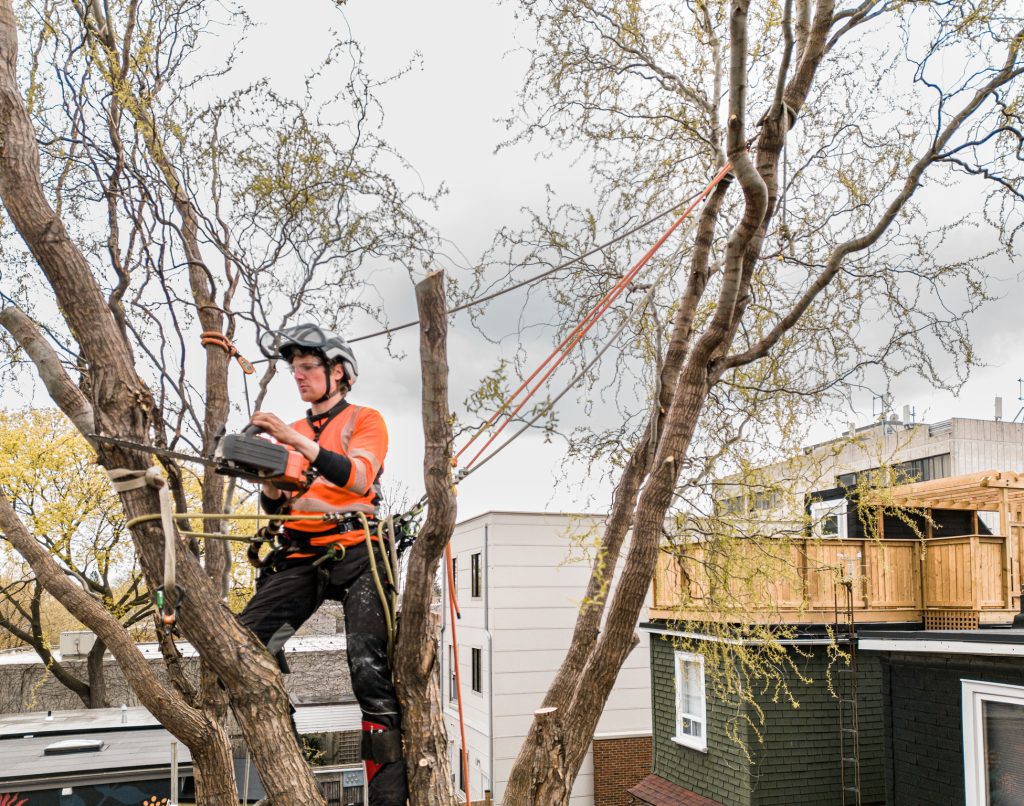
When it comes to tree removal, finding budget-friendly contractors is essential for a cost-effective and efficient process. However, selecting the right professionals at an affordable rate requires careful consideration and comparison. In this article, we explore valuable tips for comparing quotes from tree removal contractors in Bellevue, WA, ensuring you receive quality service within your budget constraints. 1. Define Your Project Scope: Before seeking quotes, define the scope of your tree removal project. Clearly outline the size, type, and location of the tree(s) to be removed, as well as any additional services needed, such as stump removal or debris cleanup. 2. Request Multiple Quotes: To ensure a comprehensive understanding of the market rates, obtain quotes from multiple tree removal experts. This allows you to compare pricing structures, services offered, and overall value. 3. Verify Licensing and Insurance: Before considering any quotes, ensure that the tree removal specialists are licensed and adequately insured. This not only guarantees the contractors’ legitimacy but also protects them in case of any accidents or damages during the removal process. 4. Assess Additional Services and Costs: Some contractors may include additional services along with the tree cutting cost in Bellevue, WA, such as stump grinding or debris removal, in their quotes. Assess these additional services and associated costs to ensure a comprehensive understanding of the overall expense. In conclusion, finding budget-friendly tree-clearing specialists involves more than just comparing prices. By following these steps and maintaining transparency in communication, you can make an informed decision that not only fits your budget but also ensures a seamless and efficient tree removal process. Remember, the goal is to strike a balance between affordability and quality service to meet both your financial constraints and tree removal needs. Search for an ideal service company for tree trimming service in Bellevue, WA, ends up finding our experts at Cascade Tree Services to ensure quality service within your budget. Contact us today at 425-530-9697 for a transparent and efficient tree removal experience!
Sustainable Tree Trimming Practices for Eco-Friendly Landscapes
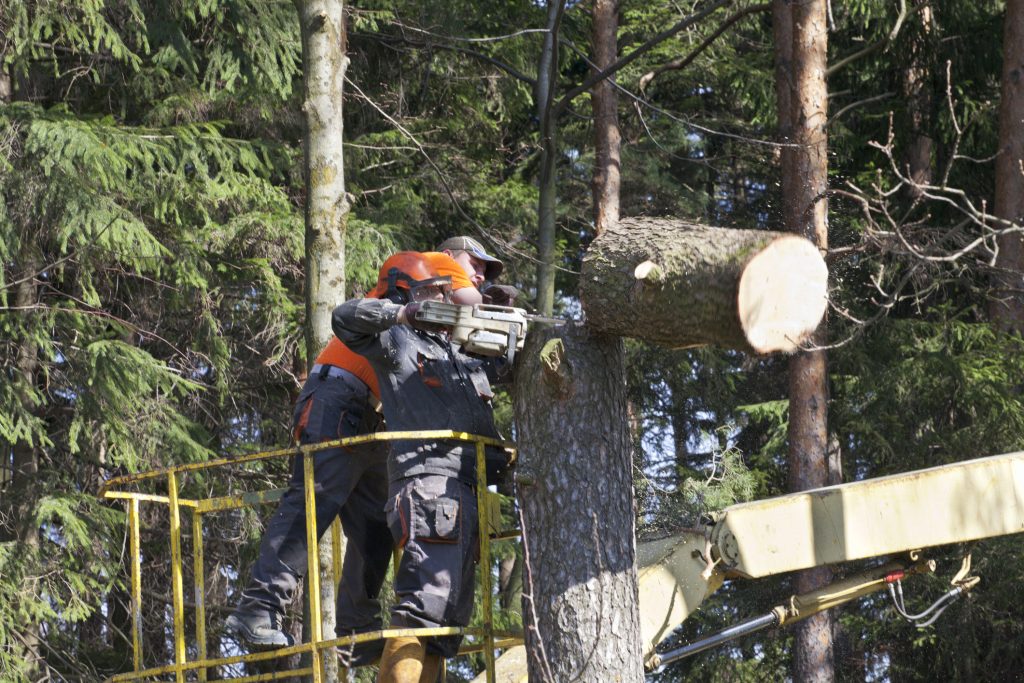
In the quest for eco-friendly landscaping, sustainable tree maintenance practices play a crucial role. Beyond aesthetic considerations, environmentally conscious tree pruning contributes to tree health, promotes biodiversity, and supports a greener, more sustainable environment. This article explores sustainable tree trimming in Bellevue, WA, techniques that not only enhance the beauty of your landscape but also align with principles of ecological responsibility. 1. Mindful Pruning for Tree Health: Sustainable tree shaping starts with mindful pruning. Rather than aggressive cuts, focus on selective pruning to remove dead or diseased branches, promoting overall tree health. This approach minimizes stress on the tree and encourages natural growth patterns. 2. Timing Matters: Choosing the right time for tree pruning is essential for sustainability. Aim for dormant seasons to minimize stress on the tree and reduce the risk of diseases. Additionally, trimming during dormant periods supports wildlife by avoiding disruption to nesting and breeding seasons. 3. Mulching and Recycling: After trimming, utilize the trimmed branches for mulching. Mulch helps retain soil moisture, suppress weeds, and provide essential nutrients. Recycling trimmed branches for mulching reduces waste and supports a closed-loop system within your landscape. 4. Preservation of Wildlife Habitats: Consider the impact on local wildlife when trimming trees. Preserve existing habitats by retaining some deadwood and providing homes for insects and birds. Mindful pruning practices contribute to a healthier ecosystem and support biodiversity. In conclusion, sustainable tree-trimming practices are essential for fostering eco-friendly landscapes. Mindful pruning for tree health, choosing the right timing, utilizing trimmed branches for mulching, preserving wildlife habitats, and avoiding over-pruning contribute to a harmonious and sustainable environment. By embracing these practices, you not only enhance the aesthetic appeal of your landscape but also play a role in supporting biodiversity, conserving resources, and fostering a healthier planet. Sustainable tree maintenance is a step towards creating landscapes that thrive in harmony with nature, reflecting a commitment to environmental stewardship. Are you looking for the best tree removal in Bellevue, WA? Elevate your landscape sustainably with our professionals at Cascade Tree Services to promote tree health, biodiversity, and a greener environment. Contact us at 425-530-9697 for sustainable landscaping today!
Tree Pruning Seasonal Secrets: When and How to Prune Your Trees
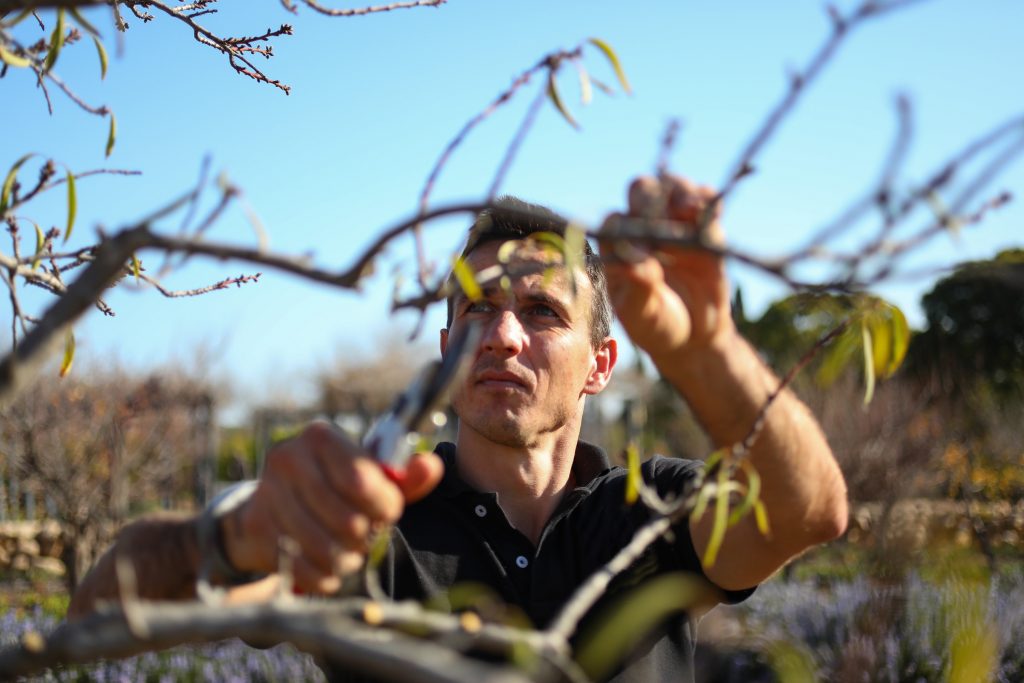
Trees are not only essential for the environment but also add beauty and serenity to our surroundings. To ensure their longevity and vitality, proper tree care is crucial, and one key aspect is pruning. Pruning is an art that involves selectively removing branches to enhance the tree’s structure, health, and appearance. However, the timing and techniques used for pruning can significantly impact the outcome. In this comprehensive guide, we delve into the seasonal secrets of tree pruning, helping you understand when and how to prune your trees for optimal results. 1. Spring Awakening: The Art of Pruning in Spring Spring is a season of renewal and growth, making it an ideal time to prune many tree species. As the sap begins to rise, trees are better equipped to heal wounds, promoting faster recovery. Focus on removing dead or damaged branches, shaping the canopy, and encouraging new growth. Be cautious with flowering trees, as pruning too late in spring may result in a loss of blossoms. 2. Summer Sculpting: Fine-Tuning in the Sun Summer pruning is about refining and maintaining the shape of your trees. Trim excessive growth, particularly water sprouts and suckers, to improve air circulation and sunlight penetration. Keep an eye out for signs of disease or pests, and promptly address any issues. Be mindful not to prune excessively, as this can stress the tree during the hot months. 3. Fall Finesse: Prep Your Trees for Winter As temperatures cool and leaves begin to fall, it’s time for fall pruning. This season is ideal for addressing structural issues, thinning the canopy, and removing deadwood. Pruning in fall allows the tree to direct energy to root development and prepares it for the dormant winter months. However, avoid late fall pruning, as it may stimulate new growth vulnerable to frost damage. 4. Winter Wisdom: Dormant Pruning for Health Winter isn’t just a time of dormancy for trees – it’s a suitable period for dormant pruning. With no leaves on the branches, the tree’s structure is more visible, making it easier to identify and address issues. Remove crossing branches, shape the canopy, and perform corrective pruning. Just ensure to avoid pruning during extreme cold snaps, as this can lead to branch damage. Tree pruning is a year-round commitment that requires understanding the seasonal nuances of each tree species. By following these seasonal secrets, you can enhance the health, beauty, and longevity of your trees. Remember, each tree is unique, so tailor your pruning approach to its specific needs. With the right knowledge and timing, your trees will flourish, contributing to a vibrant and healthy environment around you. Master the art of tree pruning for healthier, more beautiful trees year-round by partnering with our experts at Cascade Tree Services! Explore our seasonal secrets guide and transform your landscape. Contact us now at 425-530-9697 for tree care excellence!
Residential Harmony: Best Tree Removal Practices for Homeowners
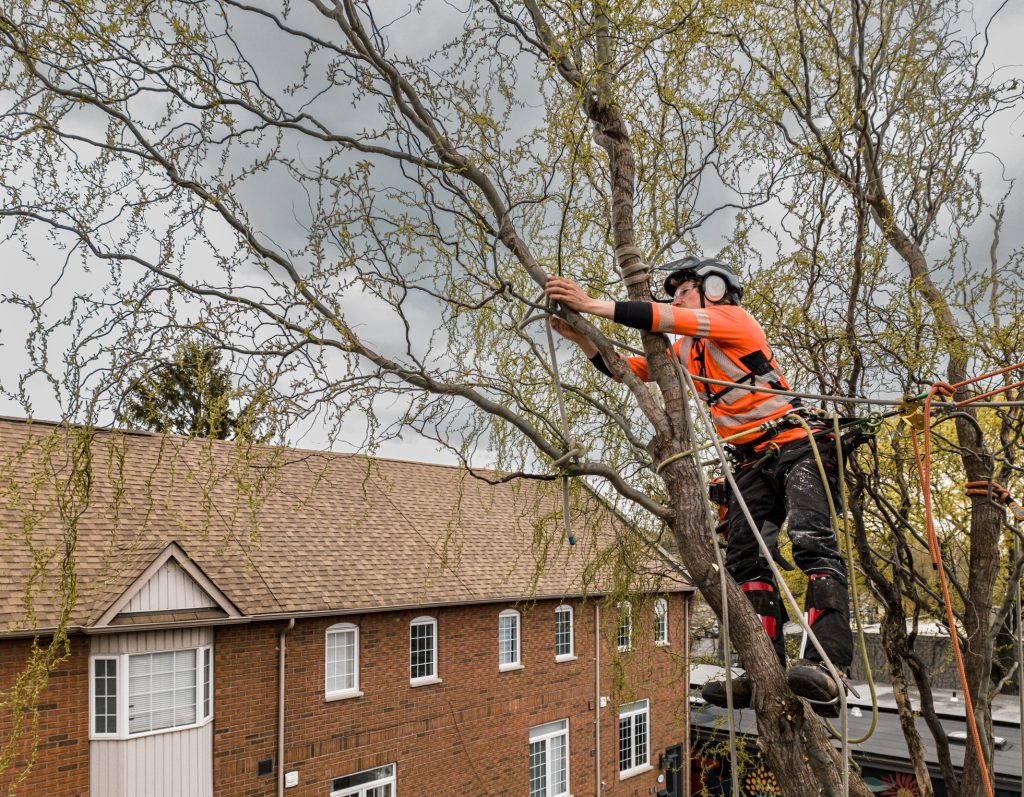
Maintaining a harmonious and safe residential environment often involves making tough decisions, such as removing trees. Whether it’s due to safety concerns, aesthetics, or landscaping purposes, understanding tree removal practices is crucial for homeowners. This article outlines essential guidelines to ensure a smooth and environmentally best tree removal in Bellevue, WA. 1. Assessing Tree Health and Safety: Before considering tree removal, assess the health and safety of the tree. Look for signs of disease, decay, or structural issues. Dead or unstable trees pose potential hazards and should be prioritized for removal to protect your property and neighboring homes. 2. Hiring Certified Arborists: Engage certified arborists for tree removal tasks. Arborists possess the expertise to evaluate the health of trees, determine the best removal methods, and minimize potential risks. Their knowledge ensures a professional and safe tree removal experience. 3. Obtaining Necessary Permits: Check local regulations and obtain any necessary permits before initiating tree removal. Some areas may have specific rules governing tree removal to preserve greenery and maintain ecological balance. Compliance with local regulations is essential to avoid legal complications. 4. Choosing Eco-Friendly Removal Techniques: Opt for the “tree cutting service near me” that adapts eco-friendly tree removal techniques to minimize environmental impact. Methods such as controlled dismantling, which involves carefully removing branches and sections, reduce the risk of damage to surrounding vegetation and structures. Additionally, consider recycling or repurposing the wood to minimize waste. 5. Planning for Tree Replacement: Maintain the balance of nature in your residential area by planning for tree replacement. Select suitable tree species that align with your landscaping goals, ensuring the aesthetic appeal and ecological benefits are preserved. Achieving residential harmony involves thoughtful consideration and responsible practices, especially when it comes to tree removal. By following these guidelines, homeowners can ensure a safe, eco-friendly, and aesthetically pleasing tree removal process, contributing to the overall well-being of their property and community. Discover an affordable tree trimming cost in Bellevue, WA, with Cascade Tree Services. Elevate your home with residential harmony. Call our professionals at 425-530-9697 and embrace a harmonious living space today!
Mastering Timing: The Optimal Seasons for Effective Tree Pruning
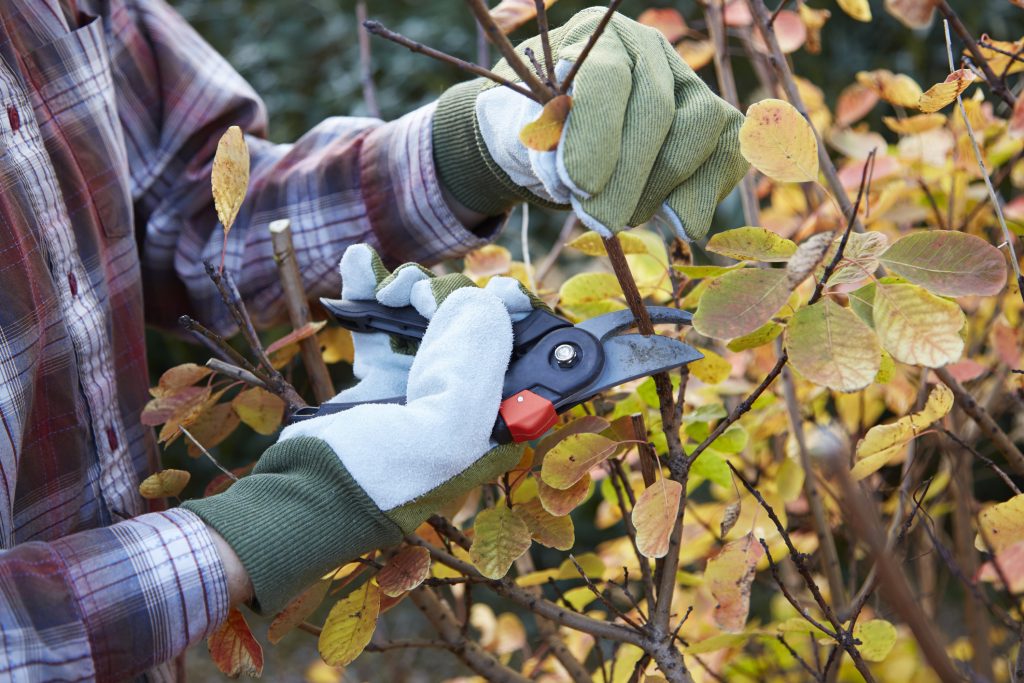
The pruning of trees is a key component of proper tree care, influencing the overall health, appearance, and structural integrity of your green assets. Understanding the best seasons for pruning is essential for maximizing benefits and minimizing potential harm. In this guide, we delve into the importance of timing and provide insights into the optimal seasons for effective tree pruning in Bellevue, WA. 1. Winter Pruning for Structural Development: Winter, when trees are dormant, is an ideal time for structural pruning. With foliage absent, arborists can easily assess and shape the tree’s structure. This strategic pruning encourages strong branch formation, reducing the risk of breakage during storms. 2. Spring Renewal and Growth: Spring brings renewed energy to trees, making it an opportune time for rejuvenation pruning. Trimming in early spring stimulates growth, removes deadwood, and enhances the overall vitality of the tree. It is crucial to complete pruning before new growth fully emerges. 3. Summer Trimming for Maintenance: Summer provides a favorable climate for gentle maintenance pruning, tackling tasks like eliminating diseased branches, managing growth, and enhancing the tree’s aesthetics. Ensure to engage a reliable service found through a search for “tree trimming service near me”, avoiding heavy pruning in extreme heat to prevent stress on the tree. 4. Fall Focus on Cleanup: Fall is a transitional period, and it’s an excellent time for cleanup pruning. Removing dead or weak branches before winter helps prevent disease and reduces the risk of winter damage. It also enhances the tree’s overall appearance and prepares it for the dormant season. Understanding the best seasons for tree cutting is crucial for promoting healthy growth, structural integrity, and aesthetic appeal. Whether it’s the structural development of winter, the renewal of spring, maintenance during summer, or cleanup in fall, each season offers unique advantages for effective tree trimming. By timing your pruning activities strategically, you can ensure the long-term health and beauty of your trees. Finding a service at an affordable tree removal cost in Bellevue, WA, is now easy with our expert at Cascade Tree Services. Contact us at 425-530-9697 to elevate your trees with precision and care by scheduling your tree-cutting service today!
Storm Damage Recovery: How a Tree Cutting Company Can Help
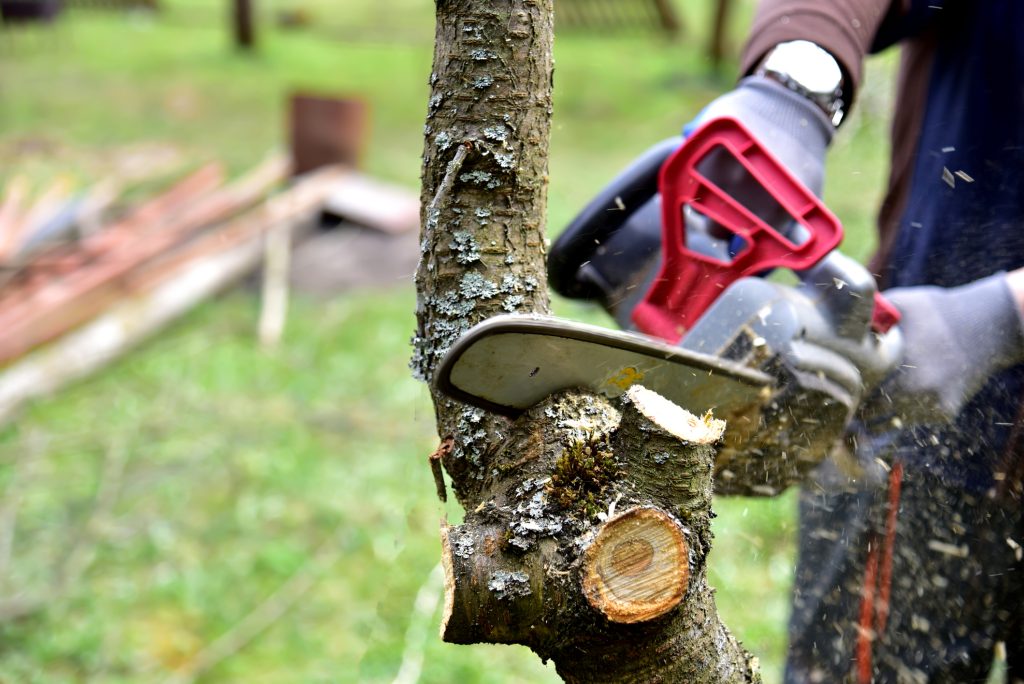
When nature exhibits its fury as storms, trees often face the brunt of this damage, posing serious threats to property and safety. In such challenging times, the assistance of a reliable tree-cutting company in Bellevue, WA, becomes indispensable. This guide explores the crucial ways in which these professionals play a pivotal role in storm damage recovery, providing both safety and restoration to affected areas. 1. Rapid Response and Assessment: The aftermath of a storm requires immediate attention. A reputable tree removal service responds swiftly to emergency calls, dispatching teams for an initial assessment. Their expertise enables them to evaluate the extent of the damage, identify hazardous trees, and prioritize areas that require urgent intervention. 2. Hazardous Tree Removal: Storms often leave behind weakened or leaning trees that pose a significant risk. Professional tree-cutting services specialize in safely removing these hazardous trees, preventing further damage to structures, and ensuring the safety of residents. Trained arborists use advanced equipment to execute precise and controlled removals. 3. Structural Damage Prevention: Prompt tree removal is essential to prevent secondary damage. Professionals strategically cut and remove trees to mitigate risks of structural damage, such as fallen trees on roofs or power lines. This proactive approach safeguards property and minimizes potential dangers to inhabitants. 4. Tree Pruning and Restoration: In addition to removal, tree-cutting experts engage in pruning and restoration efforts. By carefully assessing damaged trees, they determine whether restorative measures can salvage the tree, promoting a healthier recovery for the landscape. In the aftermath of a storm, a reliable tree management company is a crucial ally in the recovery process. Their swift response, hazardous tree removal, debris cleanup, and restoration efforts ensure a safe and efficient recovery, allowing affected areas to regain their natural beauty while minimizing risks. Are you looking for the best tree pruning services in Bellevue, WA? From rapid response to hazard removal, Cascade Tree Services ensures a safe and swift recovery. Call our experts at 425-530-9697 to book your service.
